Life Zones in the Sierra Nevada
The Sierra Nevada mountains are located in the western part of California, between the Central Valley and the Basin and Range province. This mountain range is 400 miles long and 70 miles wide. It can be referred to ecologically as a "sky island," as it is surrounded by areas with significantly drier climates. The mostly granitic mountains rise from 5,000 feet in the north to more than 14,000 feet in the south. Most have experienced significant glacial erosion. For more on the geology of the range, read here.
From the Central Valley and Owens Valley floor to the highest peaks, there are six distinct biotic zones from the foothills to the alpine. They include habitat for many special species: 135 plant species that are federally listed as threatened, endangered or sensitive, and 80 birds, 40 mammals, 10 reptiles, 20 amphibians and 30 fish on the California State Special Animal list.
The Life Zones found in the central Sierra Nevada can be described as :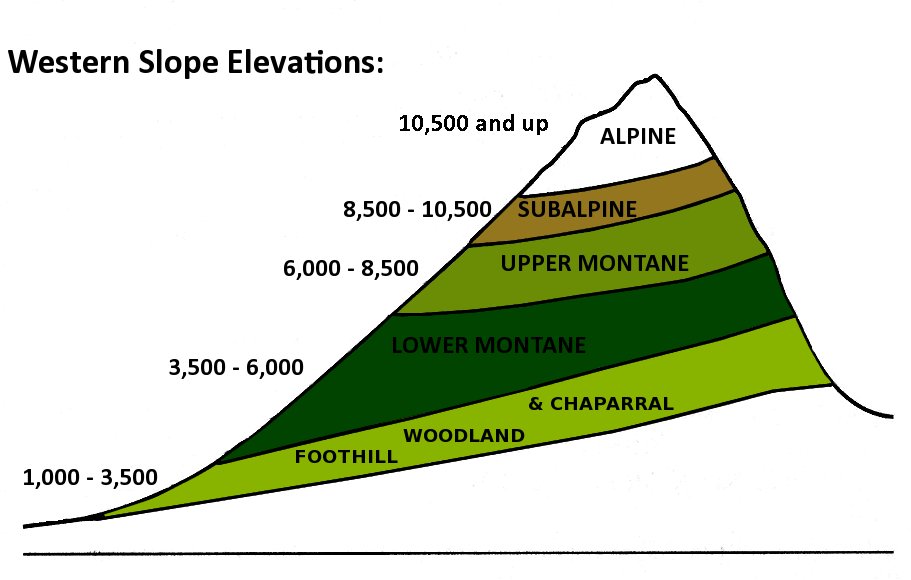
• Foothill-Woodland and Chaparral Zones (1,800 — 3,000 feet or 549 — 900 meters)
• Lower Montane Forest (3,000 — 6,000 feet or 900 — 1,800 meters)
• Upper Montane Forest (6,000 — 8,000 feet or 1,800 — 2,450 meters)
• Subalpine Forest (8,000 — 9,500 feet or 2,450 — 2,900 meters)
• Alpine Zone (9,500 — 13,000 feet or 2,900 — 3,900 meters)
The life zones change elevation as latitute changes. As one moves north in the Sierra Nevada, these life zones are generally found at lower elevations than in the south of the mountain range.
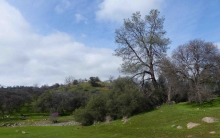 Foothill Woodland Zone
Foothill Woodland Zone
The lowest life zone in the Sierra Nevada is the foothill woodland zone, an area that is hot and dry in the summer with very little or no snow in the winter. Plants within this zone have adapted to droughts and frequent fires. Before the arrival of European settlers, the hillsides were covered with both annual and perennial native grasses. Seeds from non-native plants were subsequently introduced and now make up 50 to 90 percent of the ground cover. The grassy hills also contain several oak species (blue oak, interior live oak and canyon live oak) along with gray pine and California buckeye plus various shrubs.
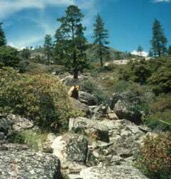 Chaparral Zone
Chaparral Zone
On hot, dry slopes, or in areas with rocky soils, the Foothill Woodland zone transitions to Chaparral. This zone is recognizable where vegetation becomes dense and shrubby with fewer trees. This zone is well adapted to hot dry summers and frequent fires. Chaparral is a complex mix of various combinations of chamise, ceanothus, manzanita, scrub oak, toyon, yerba santa, and other native plants.
Lower Montane Forest
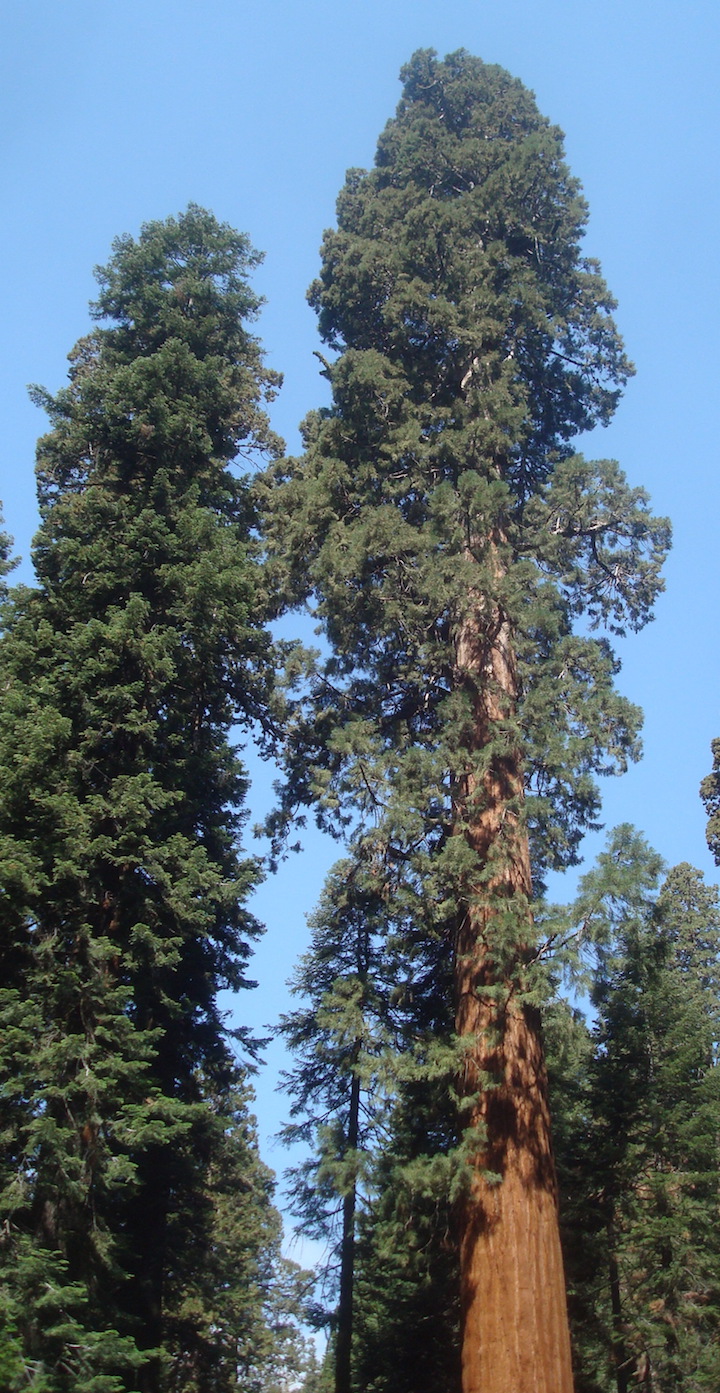 Beginning near the 3,000 foot (900 m) elevation, the hot, dry summers and cool, moist winters of the Mediterranean climate give rise to the lower montane forest zone. The accumulation of several feet of snow during the winter is not uncommon and can stay on the ground for several months. The diversity of tree species found in this zone make this a beautiful and interesting forest to explore. The lower montane forests are found along the western boundary of Yosemite National Park and include trees such as California black oak, ponderosa pine, incense-cedar, and white fir. Giant Sequoia groves including the Mariposa, Merced, and the Tuolumne Groves of Yosemite, and the many groves of Sequoia Kings Canyon are also found within this vegetation zone.
Beginning near the 3,000 foot (900 m) elevation, the hot, dry summers and cool, moist winters of the Mediterranean climate give rise to the lower montane forest zone. The accumulation of several feet of snow during the winter is not uncommon and can stay on the ground for several months. The diversity of tree species found in this zone make this a beautiful and interesting forest to explore. The lower montane forests are found along the western boundary of Yosemite National Park and include trees such as California black oak, ponderosa pine, incense-cedar, and white fir. Giant Sequoia groves including the Mariposa, Merced, and the Tuolumne Groves of Yosemite, and the many groves of Sequoia Kings Canyon are also found within this vegetation zone.
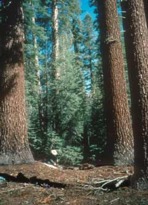 Upper Montane Forest
Upper Montane Forest
The upper montane forest begins at higher elevations near 6,000 feet (1800 m), where the montane climate is characterized by short, moist, cool summers and cold, wet winters. Snow begins to fall in November and may accumulate to depths of six feet or more and remain until June. Pure stands of red fir and lodgepole pine are typical of this forest. Jeffrey pine, which has bark that smells like vanilla, and the picturesque western juniper can also be found in this zone. Beautiful wildflowers bloom in meadows from June through August.
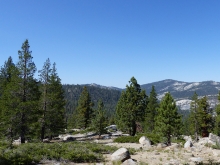 Subalpine Forest
Subalpine Forest
The upper montane forest is replaced by the subalpine forest near 8,000 feet (2450 m), where the climate is cooler with an even shorter growing season due to long, cold, and snowy winters. Accumulations of three to nine feet of snow are typical. The western white pine, mountain hemlock, and lodgepole pine are found in this forest with many subalpine meadows that flower from July through August. Many of the trees that grow in this zone grow in contorted or stunted shapes due to the high winds and extreme growing conditions.
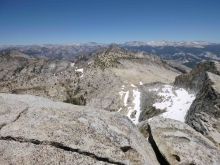 Alpine Zone
Alpine Zone
The alpine zone begins near the 9,500 foot (2,900 m) elevation and is easily distinguished as it is above tree line. No trees grow in this zone due to the harsh climatic conditions. Short, cool summers with long, cold, and snowy winters are typical at these elevations. Many exposed granitic outcroppings, talus slopes, and boulder fields limit the amount of vegetation that grows here. The herbaceous plants need to flower and produce their seeds quickly during the short, frost-free period of summer.
Source: National Park Service. 2016. Plants, Yosemite National Park: https://www.nps.gov/yose/learn/nature/plants.htm
3rd/4th grade presentation:
National Park Service- Life zones of the Sierra Nevada: https://www.nps.gov/seki/learn/education/upload/life-zones-of-the-sierra-nevada-3rd-and-4th-grade-presentation.pdf
Additional Resources
Botti, Stephen J. 2001. An Illustrated Flora of Yosemite National Park. Yosemite Association, Yosemite National Park, CA.
Storer, Tracy I. et al. 2004. Sierra Nevada Natural History. University of California Press: Berkeley, CA.



